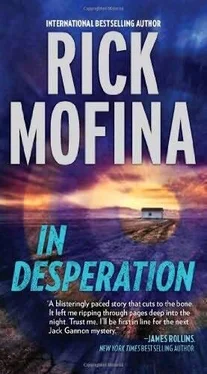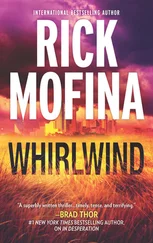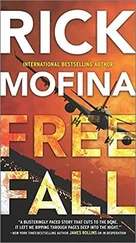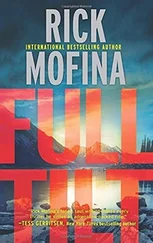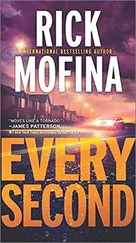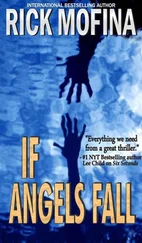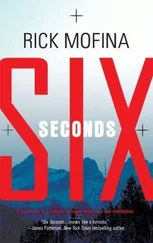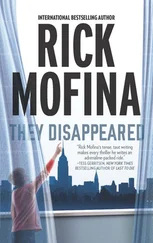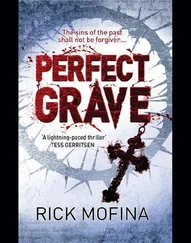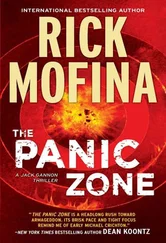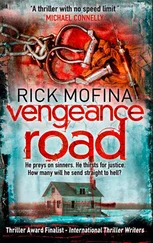Angel very calmly collected his bag and headed to the bathroom. The passengers, many of them dozing, were oblivious to what was transpiring.
The bathroom was locked. It was occupied.
Angel waited.
Then he felt the bus decelerate.
He rapped softly on the bathroom door. Through the windows he could see the bus was leaving the interstate. Angel heard movement in the bathroom just as the public address system in the bus crackled with the driver’s voice.
“Ladies and gentleman, we’re making an unscheduled stop in Willcox to have a mechanical issue checked. It will not take long. Please remain on the bus and accept my apologies for any inconvenience.”
The bathroom door clicked and a large grandmother navigated her way out, muttering in Spanish. Angel waited, then entered the small room, holding his breath.
Inside, Angel locked the door and stood on the lid of the toilet seat. Above the toilet, in the ceiling, was a combination vent and escape hatch. The hole was about eighteen-by-eighteen inches, covered with screen.
The hatch cover was open, tilted upward toward the front of the bus. Angel noticed the wires that likely connected to an indicator light on the driver’s console. He used his small knife to cut them.
He removed the screen, hooked a long strap of his pack to his shoe then hoisted himself smoothly through the hole, pulling his pack after him. He lay flat on his stomach, keeping low to the bus roof, hanging on the lip of the hatch as the wind rushed over his body.
The bus turned on to the business loop. As it crawled along, Angel glimpsed a scattering of settlements before it approached the downtown and clusters of sleepy low-rise buildings.
Over the noise outside he could hear someone knocking on the locked bathroom door, then a man’s voice, muffled but impatient.
The bus stopped at a traffic light beside a large dump truck loaded with fine gravel or sand. This was Angel’s chance. Keeping close to the roof, he waited for the right moment, slid to the side and leaped into the truck.
Angel’s pulse raced.
Sand stuck to his moist face and hands as he waited in the dump truck, waited for voices, for a siren, for a commotion, for an ending.
Then the dump truck jolted and its transmission grinded as the driver upshifted. The truck rolled slowly through downtown Willcox.
Angel peered over the side, saw his bus disappearing as the dump truck turned and headed out of town.
He was now two hundred miles from Phoenix.
Clarksburg, West Virginia / El Paso, Texas
Steve Pollard had to be certain.
At the FBI’s crime data center outside Clarksburg, the fingerprint analyst needed to check another aspect of the Phoenix kidnapping.
Pollard’s standard operating procedure was to leave no stone unturned.
He’d already identified the two kidnapping suspects, Ruiz Limon-Rocha and Alfredo Hector Tecaza. Check that off. But he was troubled by the elimination prints from the Phoenix case. Pollard had used them to compare with Limon-Rocha and Tecaza’s impressions but was uncertain if the elimination prints themselves had been submitted through the network of crime databases.
Pollard was submitting them now. Better to do it twice than risk an oversight, he thought. Even though he didn’t expect anything, he had to exhaust all possibilities.
After submitting the elimination prints, Pollard was about to check the daily email on success stories circulated to all the fingerprint examiners in the section. But he didn’t get the chance. One of the databases yielded a hit on one of the elimination prints Pollard had just submitted. His eyes narrowed at he concentrated on the result.
What the heck?
It came out of the Violent Criminal Apprehension Program, the national database that held details on a range of violent crimes, including serial murders and unsolved homicides, some going back over twenty years.
One of the submissions had yielded a possible match from an unsolved case. Pollard sat up, went to work making comparisons.
I don’t believe this .
A few minutes later he started making phone calls.
At that moment, in Texas at the El Paso Intelligence Center, DEA analyst Javier Valdiz was drafting a new intelligence note on the Norte Cartel for FBI Special Agent Earl Hackett in the Phoenix Division. This one would expand on the summary he’d sent earlier on Ruiz Limon-Rocha and Alfredo Hector Tecaza.
Valdiz worked quickly, marrying up-to-the-minute raw data with the history of the Norte Cartel. He consulted the org chart of cartels in Mexico, Central and South America and criminal networks throughout the Caribbean and their tentacles into the U.S. and elsewhere. The latest edition was complex, starting with leaders and commanders, flowing to plaza bosses, gatekeepers, soldiers, enforcers, transportation chiefs and sicarios. The genealogical aspect to the charts showed bloodlines going back generations, family networks, affiliations.
The Norte Cartel, also known as the Zartosa Cartel, arose from the barrios of Ciudad Juarez to challenge all existing cartels in a battle for control of the prized shipment routes into the U.S.
The Norte Cartel trafficked in marijuana, Colombian cocaine, heroin and methamphetamines. It controlled major distribution hubs in Florida, Georgia, Texas, Arizona, California, and in Chicago, New York, Montreal, Toronto, Vancouver, London, Amsterdam, Paris, Madrid and Rome.
It was effective at bribing and threatening government officials, infiltrating police agencies and operating a near-perfect unit of elite, young, highly-trained assassins. Its membership was said to number two thousand, making it among the most powerful, deadly and vengeful of all the major narco organizations. To steal from the cartel meant grisly death. To challenge them in any way ended in torture, mutilation and decapitation, with corpses displayed as warning. The cartel had no alliances and waged war with all rivals, Valdiz wrote.
The Norte Cartel was led by Samson Zartosa aka Twenty-five, El Monstruo. DOB: Unknown. Height: Unknown. Weight: Unknown. Hair Color: Unknown. Eye Color: Unknown. Second in Command was Garcia Deltrano aka Thirty, Comandante. DOB: 16 July 1967. Height: 5'10". Weight: 180. Hair Color: Black. Eye Color: Brown.
Cartel history, intelligence and legend indicated Samson Zartosa rose from the gutter of a Juarez barrio to become one of the world’s wealthiest and most-feared drug lords.
Samson Zartosa’s father, a carpenter, was stabbed to death in front of his wife and their three sons by two men who’d come to their home demanding money. Samson, the eldest, was fourteen. He led his two younger brothers to find and kill their father’s killers, and their families.
It turned out that the two men were thugs in a feared gang.
Consequently, the Zartosa family’s stature and respect was instant. At fourteen, Samson assumed control of the murdered men’s barrio gang, and in a few years built it into a merciless drug cartel.
Along the way, tragedy befell the Zartosa family three more times. The boys’ mother died young of a heart attack. Eduardo, the youngest brother, was in his late teens when he was killed while on vacation in California. Hector, the middle brother, died two years ago during a gun battle with Mexican military forces that left twenty Norte members dead.
When Samson learned Hector had been betrayed by a DEA informant, he ordered the decapitation of the informant’s family members. Next, through threats and bribery, the Norte Cartel determined the informant was being guarded by Mexican and U.S. officials in a mountain hideaway. On the day a convoy was to transport him to an airstrip, two hundred Norte Cartel members surrounded the vehicles, extracted the informant and executed him on the spot.
Читать дальше
